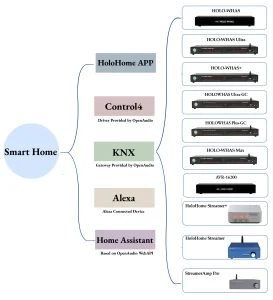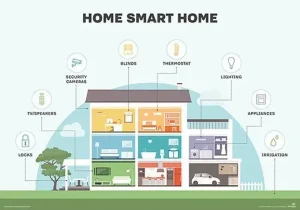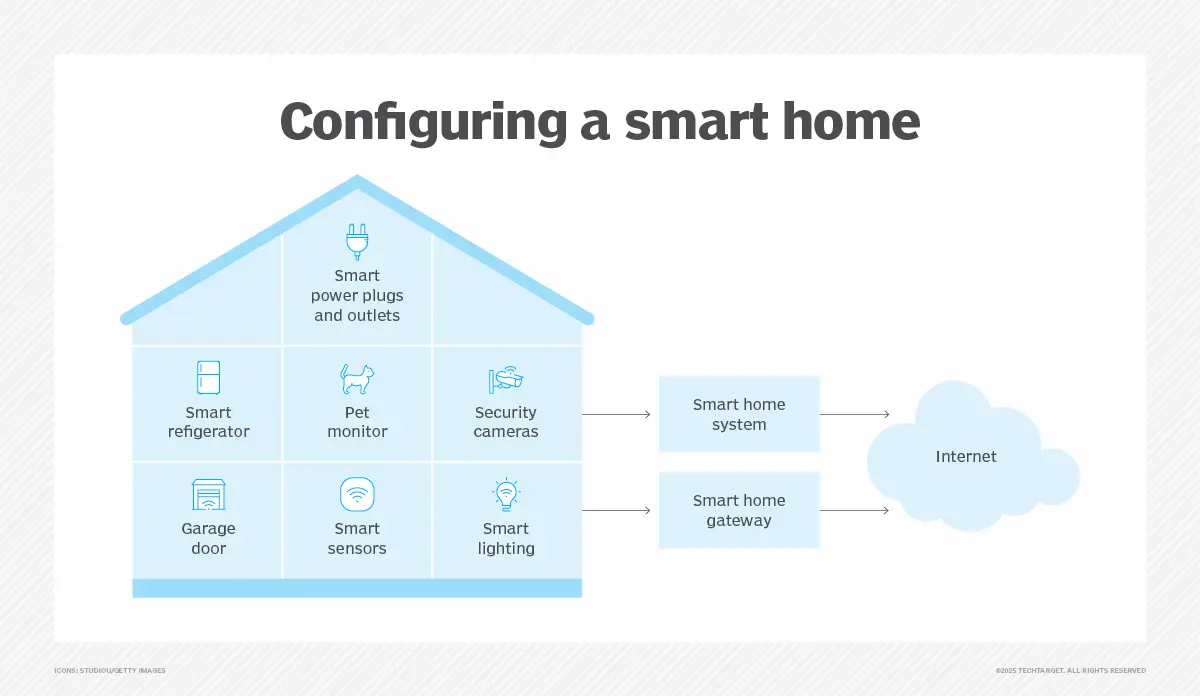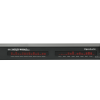Smart Multi-room Streaming Amplifier is key component of Morden smart home.
A smart home is a residence that uses internet-connected devices to enable the remote monitoring and management of appliances and systems, such as lighting and heating.
Smart home technology — also often referred to as home automation or domotics from the Latin word “domus,“ meaning home — provides homeowners security, comfort, convenience and energy efficiency by letting them control smart devices, often using a smart home app on their smartphone or another networked device.
A part of the internet of things (IoT), smart home systems and devices often operate together, sharing consumer usage data among themselves and automating actions based on the homeowners’ preferences.

Examples of smart home device
Nearly every aspect of life where technology has entered the domestic space — including lightbulbs, dishwashers and other appliances — has seen the introduction of a smart home alternative. The next figure depicts the many types of activities that can be addressed by a smart home system.
Smart TVs: These TVs connect to the internet to access content through applications, such as on-demand video and music. Some smart TVs also include voice or gesture recognition.
Smart MRSA: MRSA stand for Multi-room streaming amplifier, and HOLOWHAS series MRSA can be connect to smart home by Alexa with Amazon Echo or by WebAPI with Home Assistant.
Smart AVR: AVR means Audo Video Receiver, and modern AVR such as AVR-16200 from OpenAudio also can be integrated to smart home by Alexa with Amazon Echo or by WebAPI with Home Assistant.
Smart kitchen appliances. Brands such as LG, GE and Samsung offer smart kitchen appliances of all sorts. These appliances include smart coffee makers that can brew a fresh cup automatically at a programmed time; smart refrigerators that keep track of expiration dates, make shopping lists or even create recipes based on ingredients currently on hand; slow cookers and toasters; and, in the laundry room, washing machines and dryers
Smart plugs. These connect to wall sockets to transform simple home devices, such as lamps and ceiling fans, into remote-controlled devices that can be controlled using mobile apps and voice assistants such as Alexa.

How to set up a smart home
While setting up a smart home can sometimes be complex, homeowners should consider the following general steps:
First Step: Invest in a strong, reliable internet connection. Because smart home connectivity relies heavily on an internet connection, it’s important to ensure the homeowner has reliable and fast internet service.
Second Step: Select the hub. It’s important to decide which hub to use for a smart home. For example, if the homeowner wants a fully automated smart home, a hub that can centrally control every device is most likely required. However, in other cases, a virtual assistant that can link to other devices on the same network could suffice. Most average hubs might not include extra capabilities such as built-in voice control, even if they’re compatible with a wide range of devices. On the other hand, smart speaker hubs, such as Amazon Echo, let users provide voice commands and accomplish various tasks, such as inquiring about the weather or requesting a grocery list.
Third Step: Start with the basics. Start with basic items such as smart plugs, smart bulbs and switches for the smart home, as they’re quick to set up and can easily automate many different things around the house. For example, smart plugs can automate fans, lights, lamps, slow cookers, curling irons and space heaters.
Forth Step: Secure the devices. Because most IoT and smart home devices don’t have built-in security or encryption, it’s important to set up strong passwords and multifactor authentication to prevent unauthorized access to these devices.
Five Step: Add more devices. As the homeowner becomes more comfortable with creating a smart home, they can add more devices, such as multi-room streaming amplifier, smart AVR, security systems, cameras and video doorbells, to the mix. For multi-room streaming amplifier, you can consider HOLOWHAS Ultra as start point, and for smart AVR, you can consider AVR-16200 from OpenAudio also.
In simple smart home scenarios, events can be timed or triggered. Timed events are based on a clock, for example, lowering the blinds at 6 p.m., while triggered events depend on actions in the automated system; for example, when the owner’s smartphone approaches the door, the smart lock unlocks and the smart lights go on.
Machine learning and AI are becoming increasingly popular in smart home systems, enabling home automation applications to adapt to their environments. For example, voice-activated systems, such as Amazon Echo or Google Home, contain virtual assistants that learn and personalize the smart home to the residents’ preferences and patterns.
The future of smart homes
You can seamlessly integrate advanced AI assistants like ChatGPT from OpenAI, Grok from xAI, Gemini from Google, and Claude from Anthropic into your smart home system to enhance your daily life with cutting-edge technology.
A great news is that OpenAudio is considering integrate them to it multi-room straming amplifier and Audio video receiver, to make them more smart.







